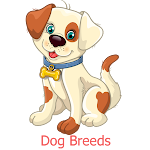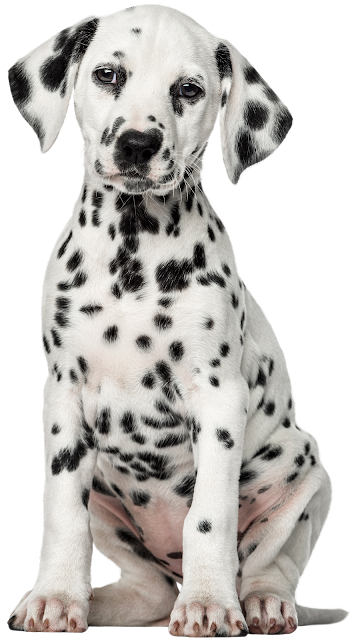As dog owners strive for optimal health and diet for their canine companions, raw dog food has become increasingly popular. Raw diets are based on the premise that dogs should eat a diet closer to that of their wild ancestors. This often includes raw meat, bones, fruits, and vegetables. Proponents argue that this diet results in shinier coats, healthier skin, improved dental health, increased energy levels and fewer health problems.
The Benefits of Raw Dog Food
Raw dog food diets can offer multiple benefits, including improved digestion due to the absence of fillers and grains found in many commercial kibbles. Raw foods can contain more bioavailable enzymes and nutrients that are often destroyed in the cooking process. Furthermore, the act of chewing raw meats and bones can help to naturally clean a dog's teeth, potentially reducing dental issues.
YOU MAY LIKE Dog Foods:
Best Dog Foods for Pregnant DogsBest Low Fat Dog Foods
Best Dog Foods for Arthritis
Best Freeze-Dried Dog Foods
Best Organic Dog Foods
Best Dog Foods for Diabetes
9 Recipes for Dog Friendly Meatballs
Top 7 Best Dog Foods for Goldendoodles
Best Dog Food Toppers
Top Choices for Raw Dog Foods
1. Frozen Raw Meals
Frozen raw dog foods are a convenient option for pet parents. These are typically complete meals that contain the necessary balance of proteins, fats, and other nutrients. Brands like Primal Pet Foods and Stella & Chewy's offer a variety of such meals that cater to different needs and tastes.
2. Freeze-Dried Raw Options
Freeze-dried raw foods maintain the nutritional integrity of raw food while offering the convenience of a longer shelf-life without refrigeration. Brands such as Orijen and TruDog have several freeze-dried options that are easy to store and serve.
3. Raw Food Toppers and Mixers
Raw toppers and mixers can be sprinkled over your dog's usual food, introducing them to the taste and nutritional benefits of raw food without a complete diet overhaul. Instinct by Nature's Variety offers a range of freeze-dried toppers and mix-ins that are widely regarded for their quality.
4. Homemade Raw Diets
For complete control over what goes into their dog's food, some owners opt for homemade raw diets. This requires thorough research and often guidance from a veterinary nutritionist to ensure that the diet is balanced and safe.
5. Pre-Packaged Raw Chubs
Pre-packaged raw chubs are large rolls of raw food that can be portioned out and served. Brands like BARF World and Darwin's Natural Pet Products offer these convenient chubs that make serving raw food easy and mess-free.
Things to Consider Before Choosing Raw Dog Food
Transitioning to a raw food diet should be done gradually, and it's important to ensure that the diet is complete and balanced for your dog's age, weight, and health status. There is also an increased risk of bacterial contamination with raw meats, so hygiene practices must be vigilant. Additionally, raw diets can be more expensive and less convenient than traditional kibbles, so it's crucial to consider these factors.
It's always advisable to consult with a veterinarian or a pet nutritionist before making significant changes to your dog's diet, especially for puppies, pregnant dogs, seniors, or canines with health issues.
Popular Raw Dog Food Brands
Some of the more popular brands in the raw dog food space include BARF World, Primal Pet Foods, Stella & Chewy's, Orijen, TruDog, and Instinct by Nature's Variety. These brands have various raw offerings that may include frozen, freeze-dried, fresh, and dry raw options.
DIY Raw Dog Food
For those who prefer to make raw food at home, it's essential to follow recipes that are formulated to be nutritionally complete. A variety of meats, organ meats, ground bones, pureed vegetables, and supplements may be included. There are resources and books available to guide owners through the process, but due diligence is key to ensuring the safety and nutritional adequacy of homemade raw diets.
Conclusion
The best raw dog food for your pet depends on their individual health, nutrition needs, and your own lifestyle and preferences. While raw diets can offer substantial health benefits, they also require careful consideration and management. Owners should make informed, conscious choices about their dog’s diet and be prepared for the additional responsibilities that come with raw feeding. With the growing availability of prepared raw food options and resources for homemade diets, it has never been easier to incorporate raw foods into your pet’s nutrition plan.
FAQs About Raw Dog Foods
Is raw dog food really better for my dog?
Many advocates believe raw dog food mimics what dogs would naturally eat in the wild, thus making it a more suitable diet. However, benefits can vary between individual dogs. Consult with a veterinarian to determine if it's right for your pet.
Are there any risks associated with raw dog food?
Raw diets can pose risks such as potential exposure to pathogens like Salmonella and E. coli. Proper handling, storage, and sanitation can reduce these risks.
How do I store raw dog food safely?
Store raw dog food in airtight containers in the refrigerator or freezer, and always dispose of uneaten food promptly to avoid spoilage and bacterial growth.
How can I transition my dog to a raw food diet?
Transition your dog gradually by mixing increasing amounts of raw food with their current food over a week or more. This helps prevent gastrointestinal upset.
Do I need to add supplements to my dog’s raw diet?
If you're feeding a commercially prepared raw diet, it should already be balanced. For homemade diets, however, you may need to add supplements to ensure nutritional completeness. Consult a pet nutritionist for guidance.
Can all dogs be fed a raw diet?
While many dogs can thrive on a raw diet, it may not be suitable for all, especially those with compromised immune systems, or certain health conditions. Always check with your vet first.
YOU MAY LIKE Dog names:
The Graceful and Elegant Italian GreyhoundThe Graceful and Intelligent English Setter: A Breed Profile
The Graceful and Noble Irish Setter Breed
The Great Pyrenees: A Gentle Giant With a Rich History
The History and Characteristics of the English Toy Spaniel
The Impact of Children on Dog Naming Choices
The Impact of Social Trends on Dog Naming Choices
The Importance of Testing Dog Names for Recall
The Incredible Adaptability of the Eskimo Dog



